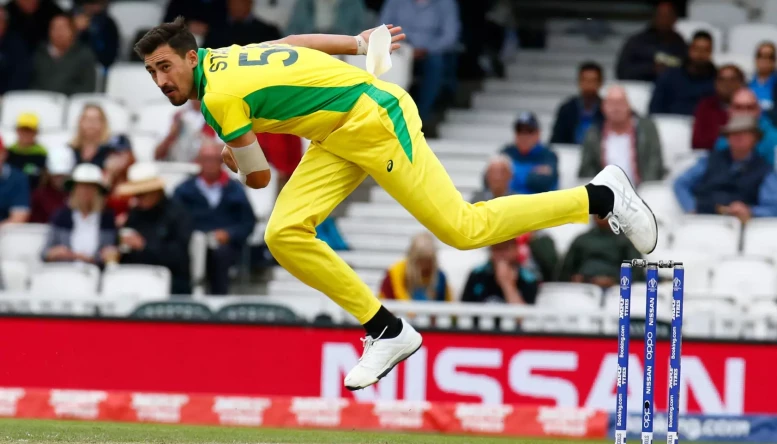T20 World Cup 2022: Three things all teams should learn from the first half of the T20I World Cup
With Sri Lanka, Zimbabwe, Ireland, and Netherlands qualifying for Super 12, and two days into the Super 12 matches, we have already witnessed high-end clashing games sending a thrill to the spine
 Mitchell Starc failed to control run flow against New Zealand
Mitchell Starc failed to control run flow against New ZealandAfter one week of everyday matches and Australian pitches doing their bit, here are the key takeaways from the games concluded in this T20I World Cup 2022.
Running between the wickets and fielding factor.
T20 format games are considered a game of batters where power-hitters and all-rounders are deeply valued.
Yes, big hitters are crucial in T20 cricket but on vast Australian grounds where boundary hitting percentage decreases drastically, running between the wickets becomes a vital factor for team batting. And at the same time, saving those single runs are equally crucial for the team fielding.
We had witnessed New Zealand and England making brilliant fielding efforts to win the matches and India doing brilliant running the wicket in the chase game of 160 against Pakistan when they had lost 4 for 31.
Bowlers have the upper hand in this World Cup
International cricket, be it in a white ball or red ball format, the game has hardly been played in Australia in October. And that is one of the reasons for apprehensions but what is certain is that batters' dominance will depend on how bowlers perform in Australia.
As we usually see T20 matches being dominated by batters, bowlers will play a key role in determining the outcome of games.
If bowlers can use the bounce and vary the pace to trouble batters, they are much into the game; otherwise, there is a high chance that batters can benefit from the bowlers' pace.
For instance, in Australia vs New Zealand, the Australian bowlers' pace became their point of weakness. Mitchell Starc, Josh Hazlewood, and Pat Cummins failed to control the run flow despite their own pace.
The prominent role of spinners alongside pacers
In the matches held so far, pacers did find an advantage that Australian pitches tend to offer them, but surprisingly the weather and pitch conditions also allowed spinners to get some help.
While the ball seemed well for the pacers, it looked gripping enough for the spinners.
Pacers were getting good lateral movement off the pitch, whereas spinners got a couple of balls to turn because the pitch wasn't as hard as we expected. This is mainly due to the weather conditions, as rain and cloudy conditions were predicted in many matches.
The pitches at all venues have different characters. Perth and Brisbane are out-and-out pacers' and seamers' tracks, while Melbourne Cricket Ground, Sydney Cricket Ground and the Adelaide tracks will assist spinners.
"They have left a bit of grass on the surface and when the ball is new and seam is upright, ball does something which is true for both pacers and spinners," said Tendulkar.
In the matches till now, it has been quite evident that pacers, though they are wicket-takers, can be expensive if not used wisely in coordination with spinners. Spinners have been successful in maintaining a low economy rate and scalping a wicket or two.
Editor's Picks
- 01
Brendon McCullum: England ready to be 'really brave' in team selection for India series
- 02
Diogo Jota inspires Liverpool surge as injuries fail to dampen Premier League lead
- 03
Cameron Norrie ready to go toe-to-toe with the big boys after stellar Australian Open run
- 04
Maxwel Cornet confident of scoring run after opening West Ham account